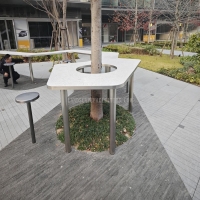Welcome to the website for landscape facilities products and knowledge.
How does the table’s design account for varying user preferences in edge detailing?
Contemporary table design demonstrates remarkable sophistication in addressing varying user preferences through strategic edge detailing. Modern manufacturers and craftsmen have developed multiple approaches to cater to diverse aesthetic tastes and functional requirements. The fundamental recognition that edge preferences vary significantly across different user demographics forms the cornerstone of today's design philosophy.
Designers typically incorporate modular edge systems that allow for customization without compromising structural integrity. These systems present numerous profile options ranging from crisp squared edges that appeal to minimalist enthusiasts to elaborate ogee and bullnose profiles preferred by traditionalists. The selection process often involves considering both visual appeal and practical considerations, such as safety in households with children or accessibility requirements for elderly users.
Material selection plays a crucial role in accommodating preference variations. Solid wood edges can be sculpted into numerous shapes post-production, while manufactured materials often utilize interchangeable edge banding with pre-formed profiles. This flexibility enables manufacturers to offer extensive customization within standardized production frameworks, balancing economic efficiency with personalization.
The human factors engineering approach further enhances this adaptability. Rounded edges increasingly feature slightly beveled undersides to improve comfort during prolonged use, while maintained sharp edges serve specific stylistic preferences. Designers also account for tactile experiences, with softer radii providing different hand-feel than more defined edges.
Technological advancements have significantly expanded these possibilities. Computer-numerical-control routing allows for precise execution of complex edge profiles that were previously cost-prohibitive. Digital design tools enable clients to visualize different edge treatments in context before production, facilitating informed decisions that accurately reflect their preferences.
This thoughtful approach to edge detailing represents the furniture industry's response to growing demand for personalized interiors. By offering strategic variability in this often-overlooked design element, tables transform from standardized products into customized pieces that genuinely reflect individual tastes and lifestyle needs, ultimately enhancing both aesthetic satisfaction and functional harmony within living spaces.
Related search:

Recommendation
An outdoor bar counter with stainless steel and terrazzo materials in an irregular shape